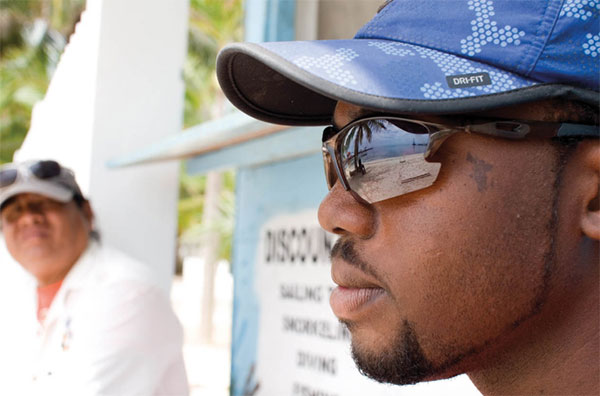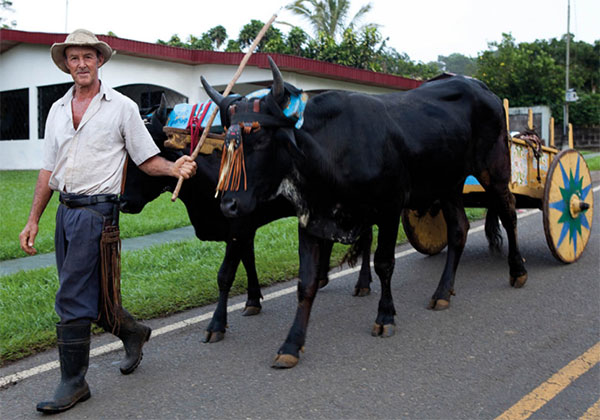MAYA HEARTLAND DECLINE
There’s still no definitive explanation for the breakdown of the Classic Maya civilization, roughly between AD 800 and 900. It now seems that it was not caused by cataclysmic natural forces. The latest evidence now suggests that a prolonged drought caused harvest failures, almost certainly due to man-made environmental over-exploitation. In turn, widespread hunger may have brought about a class-based uprising against the ruling elite. Some academics even hypothesize that the failure of calendar-based prophesies could have triggered revolt. Whatever the reasons, all the cities in the heartland of the Maya world were all but deserted by AD 909.
Other indigenous people
While the Maya are the predominant indigenous group in the region, they are by no means the only indigenous group. Like the Maya, however, they have suffered much the same fate. The Europeans brought diseases to which the native populations had no immunity and entire tribes were obliterated. Many lived in patrimonial groups, grew corn, and were culturally similar to groups from southern Mexico. These peoples were devastated during the Spanish Conquest by disease and by slave traders who shipped them off to Panama and Peru. Their surviving descendants are today mostly integrated into contemporary Central American life.

San Pedro locals, Belize.
Corrie Wingate/Apa Publications
In southwestern Honduras and eastern El Salvador, the Lenca are believed to have migrated to the region from South America some 3,000 years ago. In Honduras, they number around 100,000, while El Salvador’s Lenca population is about half of that. The Guaymí, now called the Ngäbe (pronounced ‘Nobe’), reside on both sides of the Panama–Costa Rica border. Most live within the Ngäbe-Buglé comarca in the Western Panamanian provinces of Veraguas, Chiriquí, and Bocas del Toro, as well as five territories in southwest Costa Rica. There are approximately 200,000–250,000 speakers of Ngäbere today, mostly living in dispersed mountain villages, despite historically being based along the coasts. In Costa Rica, clans such as the Terraba, Boruca, and – in the Talamanca mountains – the Bribri and Cabecar fled to the almost inaccessible jungle regions of the southern mountains on the arrival of Europeans. Much of their culture has been preserved by their descendants, who still speak their original languages and live in the remote regions of the Talamanca Mountains. Despite the influence of Christian missionaries, many native people have not forsaken their animistic religious traditions. The Bribri call their deity Sibu and trust in shamans, with their vast knowledge of the rainforest’s medicinal herbs, to cure a range of illnesses.
On the Caribbean coast of Panama, the Chibchan-speaking Kuna, also known as the Guna or Cuna, live in three autonomous comarcas, as well as several small villages in Colombia. Most of the population lives on a group of small islands off the coast, known as Kuna Yala, or the San Blas Islands, as well as in communities in Panama City and Colón.
In Costa Rica, the most dramatic influx of people today is the result of the flourishing tourism industry. People of all ages come to carry out ecological work, stimulating major changes in the environmental awareness of the country.
In the late 1700s, the Emberá began migrating from the Choco region of Colombia to the Darién province of Panama, pushing the Kuna farther toward the coast. There are an estimated 33,000 Emberá people living in Panama, most in the Darién, as well as Lake Gatún and throughout the Canal Zone.
Immigrant groups
Throughout the region, some immigrant communities may seem completely out of place on the beaches and rainforests of Central America. For example, Chinese immigrants arrived in large numbers to work on the railroads in the 19th century. As their fortunes improved, Chinese immigrants set up small eateries, groceries, and liquor stores. The steady trickle of Chinese immigrant laborers that followed the first railroad workers benefitted from those who were already established. Through work contracts and credit assistance from other Chinese, they set up commercial ventures along the railroad, in the port cities, and in growing rural communities throughout the country. Their small-scale businesses required little capital investment, only a minimal acquaintance with the language, and allowed all members of the growing family network to become involved in tending the business. Chinese family traditions upheld the authority of elders and reinforced an already strong generational hierarchy. Well-defined divisions of labor, plus a strong work ethic, ensured that their businesses flourished.
In an attempt to find an alternative working force, railroad managers imported thousands of Italians, though the disagreeable working conditions soon led them to leave the rail projects. Many remained throughout the region and settled in government-sponsored colonies, like San Vito, in the southern Pacific region of Costa Rica.
The gringo
Gringo’s are unmistakable in places like San José and Panama City, their heads sticking out above the throng of people crowding the chaotic city sidewalks. A pejorative word in much of Latin America, gringo is a much milder term here, applied not only to US citizens but also to Canadians and Europeans. Early in the 19th century, attracted by the promise of wealth from coffee, French, German, and British entrepreneurs, along with teachers, scientists, and professionals, emigrated to Central America. Many married local women and most became thoroughly assimilated. Today, many powerful families in the arts and politics bear British or German surnames.

Farmer with oxcart, Central Valley, Costa Rica.
Corrie Wingate/Apa Publications
Since the 1960s, laws favoring North American and European retirees have led to the establishment of a large number of comparatively wealthy gringos throughout the region, particularly in Costa Rica’s Central Valley, the Chiriquí highlands, the Pacific coast of Panama, and coastal areas of Belize and Honduras. These retirees come for the warm climate and for the higher standard of living their dollars afford them. With the growing disparity in the country between haves and have-nots, foreigners are sometimes viewed less favorably these days, especially those who come to Costa Rica in order to make a quick buck in what are sometimes shady or environmentally insensitive property developments.